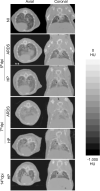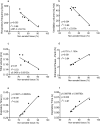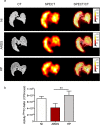Lung aeration in experimental malaria-associated acute respiratory distress syndrome by SPECT/CT analysis
- PMID: 32470082
- PMCID: PMC7259762
- DOI: 10.1371/journal.pone.0233864
Lung aeration in experimental malaria-associated acute respiratory distress syndrome by SPECT/CT analysis
Abstract
Malaria-associated acute respiratory distress syndrome (ARDS) is an inflammatory disease causing alveolar-pulmonary barrier lesion and increased vascular permeability characterized by severe hypoxemia. Computed tomography (CT), among other imaging techniques, allows the morphological and quantitative identification of lung lesions during ARDS. This study aims to identify the onset of malaria-associated ARDS development in an experimental model by imaging diagnosis. Our results demonstrated that ARDS-developing mice presented decreased gaseous exchange and pulmonary insufficiency, as shown by the SPECT/CT technique. The pulmonary aeration disturbance in ARDS-developing mice on the 5th day post infection was characterized by aerated tissues decrease and nonaerated tissue accumulation, demonstrating increased vascular permeability and pleural effusion. The SPECT/CT technique allowed the early diagnosis in the experimental model, as well as the identification of the pulmonary aeration. Notwithstanding, despite the fact that this study contributes to better understand lung lesions during malaria-associated ARDS, further imaging studies are needed.
Conflict of interest statement
The authors have declared that no competing interests exist.
Figures






